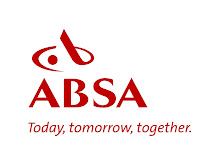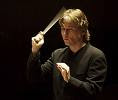.JPG)

Sonata for Viola and Piano by Octavio Vazquez as I see it
by Viacheslav Dinerchtein
For many this will be the first hearing of the Viola Sonata by Octavio Vazquez, and to speak of a new composition before its first hearing is always dilemmatic. One tries to not unveil too much, for that would be tantamount to giving away the content of a new film before its release. As for what can be unveiled, it is painfully challenging to verbalize musical matter, presuming music begins where words end. (And, being myself a reserved-in-speech sort of individual probably does not help either). Enough said of my ample justification for being vague, if not brief.
The Viola Sonata by Octavio Vazquez was selected a piece-winner at the prestigious Prokofiev International Competition for Composers in St. Petersburg in 2003 – a victory, which hardly surprised me: years earlier, when the Sonata was undergoing its embryonic stage, Octavio revealed me the drafts of the first two movements, which left me flabbergasted and, quite frankly, aware of what to expect as far as quality of music is concerned.
Several attributes of the Sonata tend to attract people's attention. Perhaps, among the first ones is the Sonata's imposing proportions for its genre: four large-scale movements with a short epilogue amount to 40 minutes of unremitting musical statement. But let us not be bedazzled by the size alone – after all, the maximalistic predilections come in different shapes. For an example, the reader is advised to consult The Gothic Symphony by the British composer Havergal Brian, a work which lasts over hundred minutes and requires four vocal soloists, four large mixed choirs, a children choir, an organ, ninety strings instruments, seventy brass and woodwinds, thirty drums, to no forget diverse percussion devices such as the wind machine, the thunder machine and the rattling chains. Surely enough, one begins to appreciate Octavio Vazquez's simplicity of means and ability to pare things down to the essentials. The point, however, lies beyond sheer comparison. It is the initial motivation for writing large-scale that makes the difference. In the Viola Sonata's case its size came out of a necessity, and not out of a strive for the heretical. In this regard, Octavio's Viola Sonata stands as an antipode to the quirky mannerisms, in spite of its imposing proportions.
The Sonata is written with great imagination and is susceptible to enormous amount of interpretations – in fact, one's perception of its diverse sections can vary on almost daily basis. As if that were not enough, the viola and the piano parts are oftentimes intertwined, depicting two entirely different characters at the same time. Independently from the interpretative choices, this music clearly does not tolerate any sugariness, nor crocodile tears, nor saliva bubbles, nor any form of sentimentality that comes cheap. It requires full engagement on performers' behalf and also does not tolerate the careless playing-notes-at-people sort of attitude – although, I guess, that could well apply to any piece of music.
Quite befitting the composer's own personality, the Sonata's strong musical content beclouds a certain dimension of enigma and even allegorical symbolism, of which we only get a glance. For instance, it may not come obvious (and indeed, perhaps not intended to come obvious) to the first-time listener that the closing monologue of the first movement is the actual opening line of the piece put in reverse, going against the flow of time to the original point of departure – that is, nothingness.
The Sonata features a number of musical references: some – camouflaged, others – unambiguously exposed. Moreover, the piece quotes itself rigorously, and so, one never knows which phrase or even motivic cell may reappear when, or grow into what... or just fade away. An omnipresent motif may dissolve into nihility, while a solitary merely passing-by motif may later become the driving force of an entire movement; such is the 'Law of the Jungle.'
While the tonus and musical language follow a conservative line of writing, the composer does make occasional use of novel techniques and sound effects, always keeping them to serviceof the musical message at hand. As far as technical difficulty is concerned, the Sonata is far from being a walk in the park, as anyone who has performed it can readily testify. It will suffice to mention that the performer – or rather, her/his left hand – must be exempt from vertigo.
The fact that Octavio Vazquez decided to dedicate the piece to me, also entrusting me with its first performance was, of course, a source of pride and great joy, even though not only in pink colors. After all, the first performer carries the responsibility to introduce the piece, and to defend it. The official première took place in late 2003, shortly after the Sonata's completion, at the Weill Hall of Carnegie Hall in New York with the pianist Eldar Nebolsin. Since then, several violists have performed the composition, bringing forward new versions of it.
On August 1st , Luis Magalhães and I will present Octavio Vazquez's Viola Sonata the way we come to understand it at this time. The piece, it seems to me, has a strong potential of heading towards longevity.
by Viacheslav Dinerchtein
For many this will be the first hearing of the Viola Sonata by Octavio Vazquez, and to speak of a new composition before its first hearing is always dilemmatic. One tries to not unveil too much, for that would be tantamount to giving away the content of a new film before its release. As for what can be unveiled, it is painfully challenging to verbalize musical matter, presuming music begins where words end. (And, being myself a reserved-in-speech sort of individual probably does not help either). Enough said of my ample justification for being vague, if not brief.
The Viola Sonata by Octavio Vazquez was selected a piece-winner at the prestigious Prokofiev International Competition for Composers in St. Petersburg in 2003 – a victory, which hardly surprised me: years earlier, when the Sonata was undergoing its embryonic stage, Octavio revealed me the drafts of the first two movements, which left me flabbergasted and, quite frankly, aware of what to expect as far as quality of music is concerned.
Several attributes of the Sonata tend to attract people's attention. Perhaps, among the first ones is the Sonata's imposing proportions for its genre: four large-scale movements with a short epilogue amount to 40 minutes of unremitting musical statement. But let us not be bedazzled by the size alone – after all, the maximalistic predilections come in different shapes. For an example, the reader is advised to consult The Gothic Symphony by the British composer Havergal Brian, a work which lasts over hundred minutes and requires four vocal soloists, four large mixed choirs, a children choir, an organ, ninety strings instruments, seventy brass and woodwinds, thirty drums, to no forget diverse percussion devices such as the wind machine, the thunder machine and the rattling chains. Surely enough, one begins to appreciate Octavio Vazquez's simplicity of means and ability to pare things down to the essentials. The point, however, lies beyond sheer comparison. It is the initial motivation for writing large-scale that makes the difference. In the Viola Sonata's case its size came out of a necessity, and not out of a strive for the heretical. In this regard, Octavio's Viola Sonata stands as an antipode to the quirky mannerisms, in spite of its imposing proportions.
The Sonata is written with great imagination and is susceptible to enormous amount of interpretations – in fact, one's perception of its diverse sections can vary on almost daily basis. As if that were not enough, the viola and the piano parts are oftentimes intertwined, depicting two entirely different characters at the same time. Independently from the interpretative choices, this music clearly does not tolerate any sugariness, nor crocodile tears, nor saliva bubbles, nor any form of sentimentality that comes cheap. It requires full engagement on performers' behalf and also does not tolerate the careless playing-notes-at-people sort of attitude – although, I guess, that could well apply to any piece of music.
Quite befitting the composer's own personality, the Sonata's strong musical content beclouds a certain dimension of enigma and even allegorical symbolism, of which we only get a glance. For instance, it may not come obvious (and indeed, perhaps not intended to come obvious) to the first-time listener that the closing monologue of the first movement is the actual opening line of the piece put in reverse, going against the flow of time to the original point of departure – that is, nothingness.
The Sonata features a number of musical references: some – camouflaged, others – unambiguously exposed. Moreover, the piece quotes itself rigorously, and so, one never knows which phrase or even motivic cell may reappear when, or grow into what... or just fade away. An omnipresent motif may dissolve into nihility, while a solitary merely passing-by motif may later become the driving force of an entire movement; such is the 'Law of the Jungle.'
While the tonus and musical language follow a conservative line of writing, the composer does make occasional use of novel techniques and sound effects, always keeping them to serviceof the musical message at hand. As far as technical difficulty is concerned, the Sonata is far from being a walk in the park, as anyone who has performed it can readily testify. It will suffice to mention that the performer – or rather, her/his left hand – must be exempt from vertigo.
The fact that Octavio Vazquez decided to dedicate the piece to me, also entrusting me with its first performance was, of course, a source of pride and great joy, even though not only in pink colors. After all, the first performer carries the responsibility to introduce the piece, and to defend it. The official première took place in late 2003, shortly after the Sonata's completion, at the Weill Hall of Carnegie Hall in New York with the pianist Eldar Nebolsin. Since then, several violists have performed the composition, bringing forward new versions of it.
On August 1st , Luis Magalhães and I will present Octavio Vazquez's Viola Sonata the way we come to understand it at this time. The piece, it seems to me, has a strong potential of heading towards longevity.


+final.jpg)

.jpg)




















